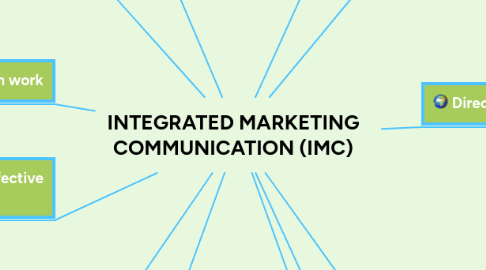INTEGRATED MARKETING COMMUNICATION (IMC)
Door teoh joan


1. The communication process
1.1. The sender acts as the source in the communication system as he or she seeks to convey a message to a receiver. AIDA concept steps through which an individual reaches a purchase decision: attention, interest, desire and action. The message must be encoded, or translated into understandable terms, and transmitted through a communications channel. Decoding is the receiver's interpretation of the message. The receiver's response, known as feedback, completes the system. Throughout the process, noise can interfere with the transmission of the message and reduce its effectiveness.
2. Objectives of promotion
2.1. Provide information
2.2. Increase demand
2.3. Differentiate the product
2.4. Accentuate the product's value
2.5. Stabilize sales
3. Importance of team work
3.1. Requires that that everyone involved in public relations, advertising, personal selling, and sales promotion. They must present a consistent, coordinated promotional effort at every point of customer contact withe the organization. This way save time, money and effort.
4. Role of databases in effective IMC Programs
4.1. Marketers have been given the power to gather more information faster to organize it more easily than ever before in history.
5. Elements of the promotional mix
5.1. Personal selling
5.2. nonpersonal selling
5.2.1. Advertising
5.2.2. Product Placement
5.2.3. Sales promotion
5.2.4. Direct marketing
5.2.5. Public relations and publicity
5.2.6. Guerilla Marketing
6. Sponsorships
6.1. Sponsorship spending
6.2. Growth of sponsorships
6.3. How sponsorship differs from advertising
6.4. Assessing sponsorship results
7. Developing an optimal promotional mix
7.1. Natural of the market
7.2. Natural of the product
7.3. Stage in the product life cycle
7.4. Price
7.5. Funds available for promotion
8. Pulling and pushing promotional strategies
8.1. Pulling strategy
8.1.1. Promotional effort by the seller to stimulate final-user demand, which then exerts pressure on the distribution channel.
8.2. Pushing strategy
8.2.1. Promotional effort by the seller directed to members of the marketing channel rather than final users.

